UMMC neurologists harvest low-intensity electric field to fight brain cancer
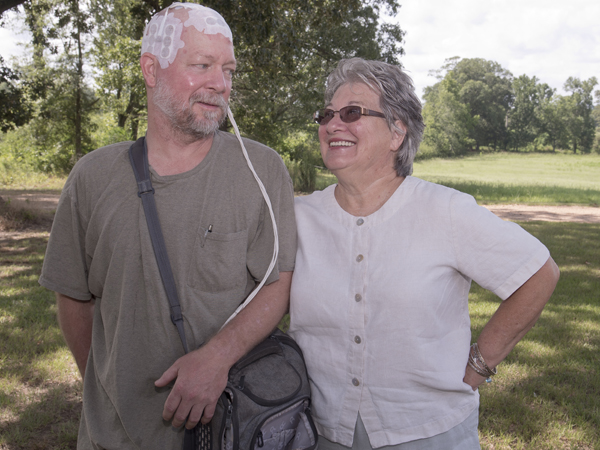
Tiny electrical fields that help your cells communicate are being harvested at the University of Mississippi Medical Center to fight a type of brain cancer that primarily strikes adults.
Dr. Mark Anderson, assistant professor of neurology specializing in neuro-oncology, said the Optune device, designed and distributed by Novocure, delivers a steady stream of low-intensity electric fields that seems to slow or stop glioblastoma cancer cells from multiplying and may cause them to die.
“This electrical field disrupts the cell's ability to divide,” said Anderson, who works with adult patients and is the only physician in Mississippi certified to prescribe Optune.
So far it's worked in multiple brain cancer patients nationwide, shrinking the tumor and destroying the cancer cells. At the same time, it avoids harming healthy cells that need to grow and divide to survive.
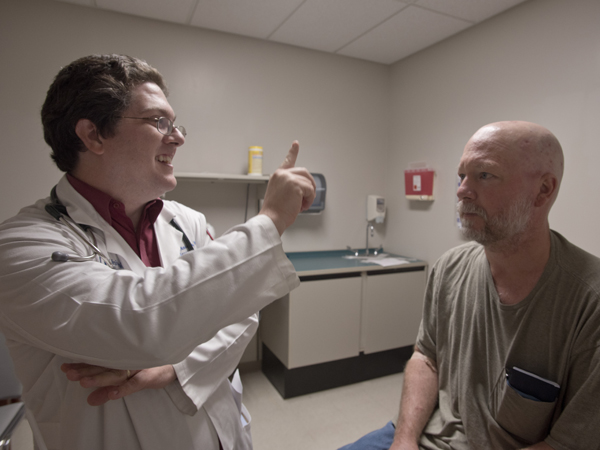
Anderson calls the result encouraging. “There has been no additional growth,” he said after Newman's recent checkup. “He has a complex mass. While part of it has shrunk, other parts have remained unchanged.
“The brain typically has fewer dividing cells,” Anderson said. “They can calibrate the electric field to be most disruptive for cells of a particular size. We know the general size of brain tumor cells, so we can target cells of that size, bypassing others.”
Patients using the device receive standard therapy for the tumors that may include surgery, radiation therapy and chemotherapy. Brain tumors often are hard to completely remove, so Optune comes into play after patients have completed radiation therapy.

Newman had all three: surgery, radiation therapy and chemotherapy. He said he started using the device as he was finishing his chemo. Optune uses an array of small electrical cells that patients attach to their head. Wires are routed to the back and trail down their neck to a battery pack the patient can wear as a backpack, increasing their mobility.
Newman said the therapy has a few drawbacks. He has to shave his head about twice a week when he replaces the arrays. And he has to carry the 6-pound battery (soon to be a 2-3 pound device) in a backpack when he's working at the family store in Brookhaven. An occasional rash from the electrical arrays is irritating.
“I'm not as mobile as I was,” he said. “I carry a little extra weight.”
The payoff is worth it, Newman said. “I'd try anything. If they told me to get out there in the parking lot and stand on my head, I'd do it.”
Anderson said Optune originally was approved for use in people with recurring tumors and those who were not responding to other therapy. The U.S. Food and Drug Administration approved the system for recurrent glioblastoma multiforme in 2011 and for newly diagnosed patients in 2015. Newman was among the first patients for whom he prescribed it.
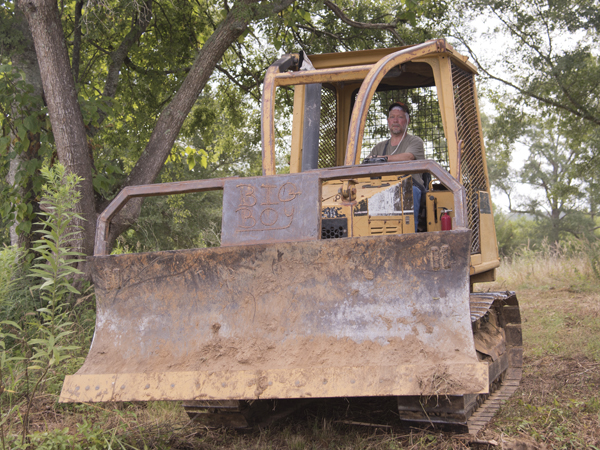
For those with recurrent glioblastoma, the therapy seems to work as well as chemotherapy, with fewer side effects. “At two years, survival for newly diagnosed patients went from 32 percent to 48 percent,” Anderson said. “That's where it has its greatest benefit. Getting started early in treatment seems to keep the tumor from coming back. Once the tumor grows back, it seems to develop a resistance to chemotherapy.”
It's in clinical trials to see if also will work on other cancers that have metastasized to the brain, Anderson said. The parent company, Novocure, also is testing it in hopes of offering clinical trials on lung, pancreatic, ovarian and breast cancer.
“We're on the forefront of using it in treatment,” Anderson said. “This is likely to be used for brain (metastasis) in the future. I'm trying to get most of my patients started on it now.”
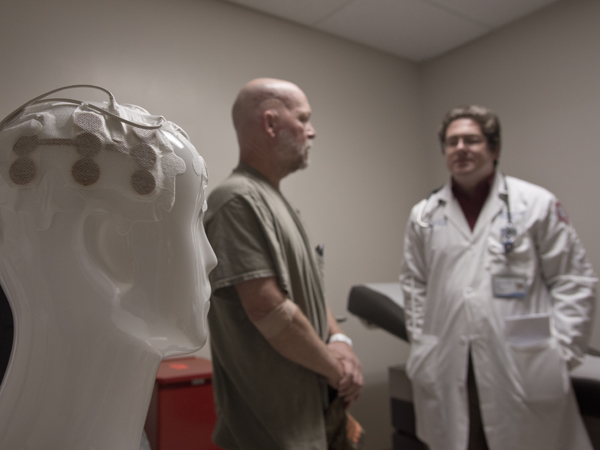
Glioblastoma is the most common brain tumor in adults, affecting men more often than women. In Mississippi in 2013, the latest year for which complete figures are available, 107 people were diagnosed with a glioblastoma, according to records in the Mississippi Cancer Registry. From 2009 through 2013, 510 people were diagnosed with glioblastoma in Mississippi.
The term may be familiar because Bo Biden, Vice President Joe Biden's son, died of glioblastoma in May 2015.
While the new therapy offers improvement, it might not be right for everyone, Anderson said.
Just how does it work?
Usually the device is prescribed after surgery and radiation therapy and while a patient is taking chemotherapy. After surgery, each patient has an MRI to pinpoint the location and shape of any remaining glioblastoma tumor.
UMMC radiation oncologists, who completed training with Optune, measure and denote the exact shape and location of any remaining tumor. “We generate a map for the optimal placement of the electrical array,” said Dr. Satya Packianathan, assistant professor of radiation/oncology. “It's worthwhile. It's shown to improve survival.”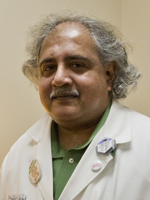
An Optune trainer goes to the patient's home with the arrays and a small backpack that contains the battery and a recording device. Based on the imaging, trainers work with patients on the precise location of the arrays.
Newman's mother, Peggy, usually places the arrays when they must be changed. “I always follow this,” she said, holding a map that the company provides in addition to scissors, medical tape and “everything we need.” She cuts out small areas of adhesive where the device has irritated his skin.
Two drawbacks? Patients must shave their head and they have to wear the arrays for about 18 hours a day. Anderson encourages them to sleep in it. They can wear a hat or head covering over the arrays.
And, there's no fudging on telling the doctor how long they've worn the device. “The device reads how long they've used it and when they've worn it,” Anderson said. “It is replaced each month and a report sent to the treating physician. The electrodes are replaced every three days. The patient gets 10 per month to use.”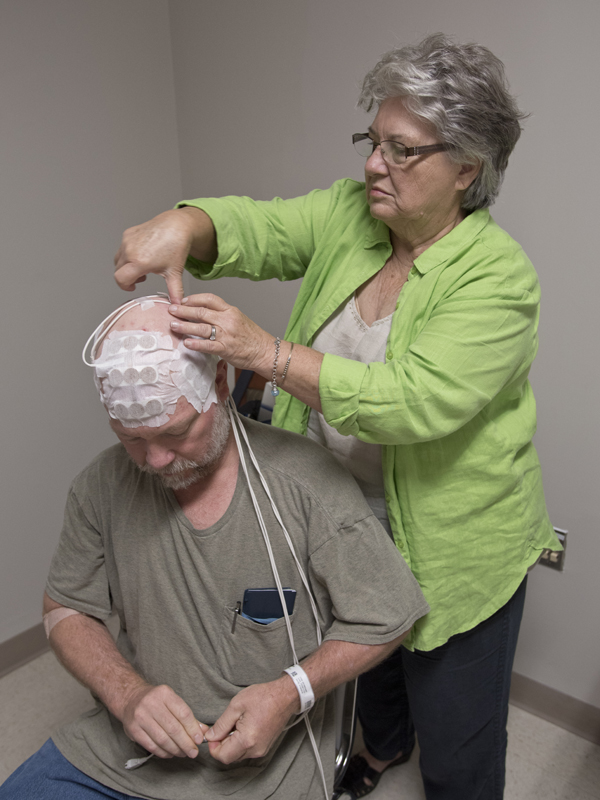
Anderson said the therapy might last as long as two years, with periodic imaging to look for remaining malignancy and gauge effectiveness. The more closely each patient can adhere to the guidelines, the better the result, Anderson said. Newman is a star in that regard.
Newman said this therapy is better than chemotherapy “without nearly the same side effects.” It can be a little warmer, but isn't too noticeable in an air-conditioned building, he said. Portability is a plus.
“I have a bulldozer and backhoe. When I have time, I'll get on them and play,” he said. “I wouldn't recommend walking a tightrope or anything, but I do pretty much what I want to do.”
Any time patients can receive therapy, show improvement or no cancer progression and continue with their daily lives, Anderson said he considers it a plus.
“This is such a horrible disease,” he said. “This is not a cure, but it does allow us to provide treatment for a longer period with fewer side effects.”

